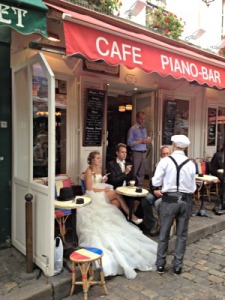
Attention displaced bookworms! Our book review columnist, Beth Green, an American expat in Prague (she is also an Adult Third Culture Kid), has canvassed several international creatives for their favorite expat- and travel-themed books of 2015, along with what’s on their bedside tables in 2016.
Hello, Displaced Nationers!
Last month I wrote to you about my Goodreads Reading Challenge, which, at 34 books and counting, is still proving (ahem) something of a challenge.
For this month’s column, instead of focusing on my 300-book goal, I decided to find out what other international creatives, several of whom have been featured in this column and/or on the Displaced Nation, have been reading.
I asked each of them to answer these two questions:
- What were the best books you read last year on displaced/expat/travel themes?
- What books are you looking forward to this year in the same or similar genres?
Their responses are nothing short of tantalizing!
So much so that I’m now wondering…can I squeeze any more in?!
Please take a look:
* * *
MARK ADAMS, bestselling author
For the last several months I’ve been working on a new book about Alaska, so the 49th State has occupied a lot of my reading hours. Naturally, I’ve reread John McPhee’s classic Coming into the Country and Jon Krakauer’s Into the Wild. But two slightly less well-known books with an Alaska connection have really stuck with me.
 The first is John Muir and the Ice that Started a Fire: How a Visionary and the Glaciers of Alaska Changed America, by Kim Heacox (Lyons Press, 2014). This is a great example of history that comes alive by weaving names, dates and events with passion for a cause, in this case environmentalism. Today, Alaska’s shrinking glaciers are viewed mostly by passengers aboard cruise ships who look up while sampling their breakfast buffets. To Muir, though, they were living things, mysteries that held timeless wisdom. Heacox makes a stirring argument that Muir’s early trips to Alaska jump-started the modern conservation movement.
The first is John Muir and the Ice that Started a Fire: How a Visionary and the Glaciers of Alaska Changed America, by Kim Heacox (Lyons Press, 2014). This is a great example of history that comes alive by weaving names, dates and events with passion for a cause, in this case environmentalism. Today, Alaska’s shrinking glaciers are viewed mostly by passengers aboard cruise ships who look up while sampling their breakfast buffets. To Muir, though, they were living things, mysteries that held timeless wisdom. Heacox makes a stirring argument that Muir’s early trips to Alaska jump-started the modern conservation movement.
 The second book is Kalee Thompson’s The Deadliest Sea: The Untold Story Behind the Greatest Rescue in Coast Guard History (Harper-Collins, 2010). When I realized that my book research was going to take me deep into the Bering Sea, which I wasn’t even sure I could place on a map, I reached for a copy of this. I’m not sure it was the right choice for someone who’ll be sailing those frigid and famously turbulent waters soon, but any readers who like tales along the lines of The Perfect Storm or Black Hawk Down will find that Thompson’s tick-tock re-creation of this lifesaving mission really places them amid the freezing chaos of the action.
The second book is Kalee Thompson’s The Deadliest Sea: The Untold Story Behind the Greatest Rescue in Coast Guard History (Harper-Collins, 2010). When I realized that my book research was going to take me deep into the Bering Sea, which I wasn’t even sure I could place on a map, I reached for a copy of this. I’m not sure it was the right choice for someone who’ll be sailing those frigid and famously turbulent waters soon, but any readers who like tales along the lines of The Perfect Storm or Black Hawk Down will find that Thompson’s tick-tock re-creation of this lifesaving mission really places them amid the freezing chaos of the action.
 One book I’ve already read and loved in 2016 takes place very far from Alaska. It’s Tim Sultan’s delightful Sunny’s Nights: Lost and Found at a Bar on the Edge of the World, a memoir that tells the story of a curious young man who lands in Brooklyn in the mid-1990s after a peripatetic and somewhat disorienting youth in Laos, the Ivory Coast and Germany. Sultan finds a home at what must be the strangest tavern north of New Orleans—Sunny’s opens only one night a week and its clientele runs from Mafiosi to nuns—and takes on the bar’s namesake owner as a sort of surrogate father. It’s a stained-glass window offering a nostalgic glimpse of a Brooklyn that has largely vanished.
One book I’ve already read and loved in 2016 takes place very far from Alaska. It’s Tim Sultan’s delightful Sunny’s Nights: Lost and Found at a Bar on the Edge of the World, a memoir that tells the story of a curious young man who lands in Brooklyn in the mid-1990s after a peripatetic and somewhat disorienting youth in Laos, the Ivory Coast and Germany. Sultan finds a home at what must be the strangest tavern north of New Orleans—Sunny’s opens only one night a week and its clientele runs from Mafiosi to nuns—and takes on the bar’s namesake owner as a sort of surrogate father. It’s a stained-glass window offering a nostalgic glimpse of a Brooklyn that has largely vanished.
 Now, a book I’m looking forward to reading this year: The Seven Storey Mountain, by Thomas Merton (Harcourt Brace; Fiftieth Anniversary ed., 1998). When I attended Catholic school in the 1970s, there were probably copies of Thomas Merton’s huge bestseller in every classroom, which is a shame, because most grade schoolers would be more interested in reading the phone book. Now that I’m older and no longer required to recite the Lord’s Prayer along with the Pledge of Allegiance every morning, I have the life experience that pushes one to ponder big questions, such as the meaning of life. Merton made that leap much earlier; he was an urbane, Ivy League-educated writer who abandoned a budding career at age 23 to cloister himself in a Kentucky monastery. (As a writer, I’m almost as awed by his decision to donate all royalties to his monastic order.) This is the story of his circuitous path toward embracing a life of pure spirituality.
Now, a book I’m looking forward to reading this year: The Seven Storey Mountain, by Thomas Merton (Harcourt Brace; Fiftieth Anniversary ed., 1998). When I attended Catholic school in the 1970s, there were probably copies of Thomas Merton’s huge bestseller in every classroom, which is a shame, because most grade schoolers would be more interested in reading the phone book. Now that I’m older and no longer required to recite the Lord’s Prayer along with the Pledge of Allegiance every morning, I have the life experience that pushes one to ponder big questions, such as the meaning of life. Merton made that leap much earlier; he was an urbane, Ivy League-educated writer who abandoned a budding career at age 23 to cloister himself in a Kentucky monastery. (As a writer, I’m almost as awed by his decision to donate all royalties to his monastic order.) This is the story of his circuitous path toward embracing a life of pure spirituality.
Mark Adams is the bestselling author of Meet Me in Atlantis: My Obsessive Quest to Find the Sunken City, which was reviewed for this column in May of last year.
JENNIFER ALDERSON, expat and author
 Last year, while researching my third novel, I was lucky enough to come across Carl Hoffman’s Savage Harvest: A Tale of Cannibals, Colonialism, and Michael Rockefeller’s Tragic Quest for Primitive Art (2014) It is simply one of the best nonfiction travel adventure stories I have read in a very long time. An award-winning American journalist, Hoffman recounts his fascinating journey to Papua New Guinea, where he retraces the last art-collecting expedition made by anthropologist Michael Rockefeller. He juxtaposes his own travels through the Asmat region with a fictive reconstruction of Rockefeller’s final days before his mysterious disappearance, based on extensive archival research and new eyewitness accounts. He effortlessly combines mystery, adventure, personal self-discovery and colonial history into one captivating novel.
Last year, while researching my third novel, I was lucky enough to come across Carl Hoffman’s Savage Harvest: A Tale of Cannibals, Colonialism, and Michael Rockefeller’s Tragic Quest for Primitive Art (2014) It is simply one of the best nonfiction travel adventure stories I have read in a very long time. An award-winning American journalist, Hoffman recounts his fascinating journey to Papua New Guinea, where he retraces the last art-collecting expedition made by anthropologist Michael Rockefeller. He juxtaposes his own travels through the Asmat region with a fictive reconstruction of Rockefeller’s final days before his mysterious disappearance, based on extensive archival research and new eyewitness accounts. He effortlessly combines mystery, adventure, personal self-discovery and colonial history into one captivating novel.

When reviewing my bookshelf last week, I noticed I’ve bought quite a few international thrillers and mysteries featuring American expat protagonists this past year. So in that vein, I’m most looking forward to reading Chris Pavone’s The Travelers, (Crown, March 2016). Pavone is an American writer whose first novel, The Expats, is set primarily in the capitals of Luxembourg, Belgium and France. That book was a stylish, fast-paced thriller, yet what caught my attention the most was the lyrical and natural way in which he described these cities without slowing the plot down. His latest thriller promises to crisscross South America and Europe. I can’t wait to read it!
 Another mystery/thriller I just learned about is Gallery Pieces: An Art Mystery, by Larry Witham (Archway Publishing, 2015). It’s about an American art expert who travels through Europe attempting to track down artwork stolen during World War Two. it sounds like a great story. Editor’s note: Larry Witham is a former journalist and foreign correspondent who became a full-time writer and artist (painting and drawing) around ten years ago.
Another mystery/thriller I just learned about is Gallery Pieces: An Art Mystery, by Larry Witham (Archway Publishing, 2015). It’s about an American art expert who travels through Europe attempting to track down artwork stolen during World War Two. it sounds like a great story. Editor’s note: Larry Witham is a former journalist and foreign correspondent who became a full-time writer and artist (painting and drawing) around ten years ago.
Jennifer S. Alderson is the author of Down and Out in Kathmandu and American expat in the Netherlands.
MARIANNE BOHR, Displaced Nation columnist and memoirist
 Of the travel/expat books I read in 2015, three come to mind immediately. The first is The Rent Collector, by Camron Wright (Shadow Mountain, 2013). This gritty yet heart-warming story is set in the largest municipal dump located on the outskirts of Phnom Penh, Cambodia, a country about which I knew little. A couple with a chronically ill son live in a hovel in the dump, surviving day-to-day from what they can salvage and sell. They struggle to pay the titular rent collector, a bitter, alcoholic woman, every month. Books play a key role in this tale of perseverance.
Of the travel/expat books I read in 2015, three come to mind immediately. The first is The Rent Collector, by Camron Wright (Shadow Mountain, 2013). This gritty yet heart-warming story is set in the largest municipal dump located on the outskirts of Phnom Penh, Cambodia, a country about which I knew little. A couple with a chronically ill son live in a hovel in the dump, surviving day-to-day from what they can salvage and sell. They struggle to pay the titular rent collector, a bitter, alcoholic woman, every month. Books play a key role in this tale of perseverance.
Wright was inspired to write the book by his son Trevor’s 2012 documentary, River of Victory, who in turn was inspired by the people he met when volunteering as a humanitarian aid worker for the Cambodian Children’s Fund.
 Last year I also enjoyed reading the classic novel A Sport and a Pastime, by James Salter, which was originally published in 1967. (it was republished by Open Road Media in 2012). It’s an erotic tale told in tight prose that takes place in a small town in France. I couldn’t put it down.
Last year I also enjoyed reading the classic novel A Sport and a Pastime, by James Salter, which was originally published in 1967. (it was republished by Open Road Media in 2012). It’s an erotic tale told in tight prose that takes place in a small town in France. I couldn’t put it down.
Editor’s note: James Salter, who died last year, had a passion for European culture and particularly for France. Though he eventually became a full-time writer, he started his life as an officer in the United States Air Force, just after the end of World War II, and was stationed overseas, in Korea, Germany and France.
 Another book I enjoyed was The Coconut Latitudes: Secrets, Storms and Survival in the Caribbean, by Rita M. Gardner. It’s a coming-of-age memoir set in the Dominican Republic, where Gardner’s father transplanted his young American family. What begins as a dream of life in paradise soon takes a few wrong turns. The book, which came out a year before mine with She Writes Press, was a Gold Medal Winner for Autobiography/Memoir at the IBPA Benjamin Franklin Awards. Editor’s Note: Rita Gardner is a Displaced Nationer who was interviewed for A Picture Says… and featured for Valentine’s Day. Her book was on our “Best of 2014” list.)
Another book I enjoyed was The Coconut Latitudes: Secrets, Storms and Survival in the Caribbean, by Rita M. Gardner. It’s a coming-of-age memoir set in the Dominican Republic, where Gardner’s father transplanted his young American family. What begins as a dream of life in paradise soon takes a few wrong turns. The book, which came out a year before mine with She Writes Press, was a Gold Medal Winner for Autobiography/Memoir at the IBPA Benjamin Franklin Awards. Editor’s Note: Rita Gardner is a Displaced Nationer who was interviewed for A Picture Says… and featured for Valentine’s Day. Her book was on our “Best of 2014” list.)
 This year, I’m looking forward to reading Things Can Only Get Feta: Two journalists and their crazy dog living through the Greek crisis, by Marjory McGinn (2nd Ed.; Pelagos Press, 2015)
This year, I’m looking forward to reading Things Can Only Get Feta: Two journalists and their crazy dog living through the Greek crisis, by Marjory McGinn (2nd Ed.; Pelagos Press, 2015)
I’ve read many memoirs about expats on the isles of Greece, but this one by a transplanted Scottish couple intrigues me because of its location on the Mani Peninsula of the Peloponnese. The rugged landscape and fierce independent people of this part of Greece has always been on my list to visit for an extended period of time, and I can’t wait to delve into this volume. Editor’s note: Marjory McGinn’s sequel, Homer Is Where the Heart Is, made the Displaced Nation’s Best of 2015 nonfiction expat books.
 Another volume on my bedside table is The Discovery of France: A Historical Geography, by Graham Robb (W.W. Norton & Company, 2008). I have owned this book for almost eight years, ever since it was published. I am a Francophile through and through and yet, the book keeps getting pushed aside for others. A history of France from the perspective of its provinces, it received outstanding reviews when it was published, and I am determined to read it in 2016. Editor’s note: For those who like stories of displacement, the author, Graham Robb, is originally from Manchester, UK, but took his Ph.D. in French literature from the University of Tennessee. He married an alumna of Vanderbilt University, and they live in Oxford, UK.
Another volume on my bedside table is The Discovery of France: A Historical Geography, by Graham Robb (W.W. Norton & Company, 2008). I have owned this book for almost eight years, ever since it was published. I am a Francophile through and through and yet, the book keeps getting pushed aside for others. A history of France from the perspective of its provinces, it received outstanding reviews when it was published, and I am determined to read it in 2016. Editor’s note: For those who like stories of displacement, the author, Graham Robb, is originally from Manchester, UK, but took his Ph.D. in French literature from the University of Tennessee. He married an alumna of Vanderbilt University, and they live in Oxford, UK.
 Another book on my to-read list is Jennifer Hillman-Magnuson’s Peanut Butter and Naan: Stories of an American Mom in the Far East, which came out with She Writes Press in 2014. This story by a woman whose husband is transferred from the US to India intrigued me the moment I read a review. They uproot their family of five children from their pampered existence in Nashville, Tennessee, to India, where they encounter extreme poverty, malaria, and no conveniences. I’m particularly interested in reading about how the children reacted to the move.
Another book on my to-read list is Jennifer Hillman-Magnuson’s Peanut Butter and Naan: Stories of an American Mom in the Far East, which came out with She Writes Press in 2014. This story by a woman whose husband is transferred from the US to India intrigued me the moment I read a review. They uproot their family of five children from their pampered existence in Nashville, Tennessee, to India, where they encounter extreme poverty, malaria, and no conveniences. I’m particularly interested in reading about how the children reacted to the move.
Marianne C. Bohr is the author of Gap Year Girl: A Baby Boomer Adventure Across 21 Countries, which came out last year with She Writes Press. It was on the Displaced Nation’s Best of 2015 list for expat nonfiction. She also contributes an occasional column, World of Words, to the Displaced Nation.
JESSICA PAN, expat and memoirist
 The best book I read last year about displaced/expat/travel themes was The Unbecoming, by Rebecca Scherm (Viking, 2015). It’s about a first-class jewel thief Julie from California, who’s really Grace from Tennessee. She makes her way to Paris, where she works for a shady antiques restorer, turning out objets d’art that are exquisite fakes. I loved how the protagonist re-invents herself in Paris—and yet, of course, her past comes back to find her. Gripping and inventive, with an unpredictable love story.
The best book I read last year about displaced/expat/travel themes was The Unbecoming, by Rebecca Scherm (Viking, 2015). It’s about a first-class jewel thief Julie from California, who’s really Grace from Tennessee. She makes her way to Paris, where she works for a shady antiques restorer, turning out objets d’art that are exquisite fakes. I loved how the protagonist re-invents herself in Paris—and yet, of course, her past comes back to find her. Gripping and inventive, with an unpredictable love story.
This year I’m looking forward to reading Cities I’ve Never Lived In: Stories, by Sara Majka, which came out with Graywolf Press in January.  Once again, these linked short stories are about reinvention, which is one of my favorite things about living abroad (and I like to think about the many versions of myself I’ve formed and perhaps left in Beijing, Melbourne and now London).
Once again, these linked short stories are about reinvention, which is one of my favorite things about living abroad (and I like to think about the many versions of myself I’ve formed and perhaps left in Beijing, Melbourne and now London).
Majka’s is the second book to come out in a collaboration between Graywolf and the journal A Public Space, to which Majka has contributed (they are also promoting her book). She made her debut in the journal seven years ago with the short story “Saint Andrews Hotel”; you can read it here.
Jessica Pan is the co-author of the 2014 memoir Graduates in Wonderland: The International Misadventures of Two (Almost) Adults. A graduate of Brown University, she worked as an editor of an expat magazine and a TV report in Beijing, earned a journalism degree in Melbourne, Australia, and now makes her living as a London-based writer.
H.E. RYBOL, Displaced Nation columnist, adult TCK and author
 One of the best books I read last year was Write This Second, by Kira Lynne Allen (Prashanti Press, 2015). Written in verse, the book tells the author’s story about overcoming trauma and reclaiming her life. Allen searingly chronicles a childhood blown apart by racism, incest, and rape, and a young adulthood marred by addiction, domestic violence and post-traumatic stress—but then she finds redemption in the recovery process and healing in her art. A sense of displacement permeates part of the book. Like other readers, I found the experience of this book life changing.
One of the best books I read last year was Write This Second, by Kira Lynne Allen (Prashanti Press, 2015). Written in verse, the book tells the author’s story about overcoming trauma and reclaiming her life. Allen searingly chronicles a childhood blown apart by racism, incest, and rape, and a young adulthood marred by addiction, domestic violence and post-traumatic stress—but then she finds redemption in the recovery process and healing in her art. A sense of displacement permeates part of the book. Like other readers, I found the experience of this book life changing.
 Another book I enjoyed reading last year was Thank You For Being Expendable: And Other Experiences, by Colby Buzzell (Byliner, 2015). Buzzell is an Iraq War veteran, and he wrote these stories, 36 in total, over a decade of making his way back home. Though there were aspects of his adventures I didn’t appreciate, I really took to his style. Like Kira Lynne Allen, he is honest and unfiltered. I also liked that he takes his readers to China, England and other places exploring underground culture while he attempts to return to civilian life and the sense of being expendable.
Another book I enjoyed reading last year was Thank You For Being Expendable: And Other Experiences, by Colby Buzzell (Byliner, 2015). Buzzell is an Iraq War veteran, and he wrote these stories, 36 in total, over a decade of making his way back home. Though there were aspects of his adventures I didn’t appreciate, I really took to his style. Like Kira Lynne Allen, he is honest and unfiltered. I also liked that he takes his readers to China, England and other places exploring underground culture while he attempts to return to civilian life and the sense of being expendable.
 My last pick for top 2015 reads is Florence and Me: The story of how the city of Florence befriended an American girl from Brooklyn, by Elaine Bertolotti (self-published, 2014). Bertolotti is a proud Italian American whose grandparents were born in Italy. She moved to Florence in the 1970s and taught English while also somehow managing to start up her own art studio and sustain an artistic career. She took pains to master the Italian language as well. Bertolotti says she likes to think of herself as one of the pioneers who paved the road for all the Americans who’ve followed her into the expat life in Italy. Her book is a short, fun read.
My last pick for top 2015 reads is Florence and Me: The story of how the city of Florence befriended an American girl from Brooklyn, by Elaine Bertolotti (self-published, 2014). Bertolotti is a proud Italian American whose grandparents were born in Italy. She moved to Florence in the 1970s and taught English while also somehow managing to start up her own art studio and sustain an artistic career. She took pains to master the Italian language as well. Bertolotti says she likes to think of herself as one of the pioneers who paved the road for all the Americans who’ve followed her into the expat life in Italy. Her book is a short, fun read.
 This year I’m looking forward to reading Gloria Steinem’s My Life on the Road (Random House, 2015). Can’t wait!
This year I’m looking forward to reading Gloria Steinem’s My Life on the Road (Random House, 2015). Can’t wait!
Beth’s note: I’m also reading this, this month. It’s great so far!
Editor’s note: Steinem’s book, her first in 20 years, is on the Displaced Nation’s Best of 2015 expat nonfiction list. We gave her the status of honorary expat for her extensive travels within and outside the United States.
HE Rybol is the author of Culture Shock: A Practical Guide and contributes the Culture Shock Toolbox column to the Displaced Nation.
SHANNON YOUNG, expat, author, and Displaced Nation columnist
 One of the best books I read last year was the memoir Here Comes the Sun: A Journey to Adoption in 8 Chakras, by Leza Lowitz (Stone Bridge Press, 2015). Lowitz is an American woman who travels to Japan and falls in love with a Japanese man and begins a life with him in Tokyo. Together they pursue adoption and start a yoga studio. What I liked: Lowitz writes about her experiences with heartfelt vulnerability. Her prose is often poetic as she gets at the heart of the displaced experience and explores a longing for motherhood that took her by surprise. Editor’s note: Leza Lowitz still lives in Tokyo with her husband and son. She calls herself an “accidental global citizen.” She is the author of 17 books in several different genres.
One of the best books I read last year was the memoir Here Comes the Sun: A Journey to Adoption in 8 Chakras, by Leza Lowitz (Stone Bridge Press, 2015). Lowitz is an American woman who travels to Japan and falls in love with a Japanese man and begins a life with him in Tokyo. Together they pursue adoption and start a yoga studio. What I liked: Lowitz writes about her experiences with heartfelt vulnerability. Her prose is often poetic as she gets at the heart of the displaced experience and explores a longing for motherhood that took her by surprise. Editor’s note: Leza Lowitz still lives in Tokyo with her husband and son. She calls herself an “accidental global citizen.” She is the author of 17 books in several different genres.
 Another book I enjoyed was Seafaring Women: Adventures of Pirate Queens, Female Stowaways, and Sailors’ Wives, by David Cordingly (Random House, 2009). It’s an account of the lives of women during the golden age of sail. These are true stories of women who left their homes to go to sea and settle in port towns all over the globe. What I liked: This book is a different take on the displaced theme. It explores the lives of real women who had a unique kind of expat experience in the great seafaring days. As with modern expats, some went to sea for adventure, some were pursuing employment opportunities (occasionally but not always disguised as men), and some were accompanying spouses. One thing’s for sure: nothing is better than real-life female pirates!
Another book I enjoyed was Seafaring Women: Adventures of Pirate Queens, Female Stowaways, and Sailors’ Wives, by David Cordingly (Random House, 2009). It’s an account of the lives of women during the golden age of sail. These are true stories of women who left their homes to go to sea and settle in port towns all over the globe. What I liked: This book is a different take on the displaced theme. It explores the lives of real women who had a unique kind of expat experience in the great seafaring days. As with modern expats, some went to sea for adventure, some were pursuing employment opportunities (occasionally but not always disguised as men), and some were accompanying spouses. One thing’s for sure: nothing is better than real-life female pirates!
 This year, I’m most looking forward to The Expatriates, by Janice Y.K. Lee (Viking, January 2016). Lee’s novel follows the lives of three expatriate women in Hong Kong. Why I’m interested: Lee’s first novel, The Piano Teacher, was one of the first books I read about Hong Kong. In fact, I bought it on the plane after visiting my now-husband several months before moving to Hong Kong to be with him. I’m looking forward to reading her new novel about the expatriate experience and comparing it to my own life as an expat here.
This year, I’m most looking forward to The Expatriates, by Janice Y.K. Lee (Viking, January 2016). Lee’s novel follows the lives of three expatriate women in Hong Kong. Why I’m interested: Lee’s first novel, The Piano Teacher, was one of the first books I read about Hong Kong. In fact, I bought it on the plane after visiting my now-husband several months before moving to Hong Kong to be with him. I’m looking forward to reading her new novel about the expatriate experience and comparing it to my own life as an expat here.
Shannon Young is a Hong Kong-based expat, Displaced Nation columnist (she contributes the bimonthly column Diary of an Expat Writer) and author of the new release Ferry Tale.
* * *
Thanks, everyone, for your contributions!
Still not seeing the right book for your next armchair adventure? Browsing ML’s great posts about fiction and nonfiction reads for 2016 is an excellent place to start. And, if you’re interested in Asia, I’d also recommend this blog post by Australian-born British novelist and writer Renae Lucas Hall, who writes about Japan. She’s listed some very intriguing books about Japan that she read in 2015 or will be reading in 2016.
So, readers, what’s on your bedside tables, and are you planning to add any of the above books?
Till next time and happy reading!
As always, please let me or ML know if you have any suggestions for books you’d like to see reviewed here! And I urge you to sign up for the DISPLACED DISPATCH, which has at least one Recommended Read every week.
STAY TUNED for more fab posts!
Beth Green is an American writer living in Prague, Czech Republic. She grew up on a sailboat and, though now a landlubber, continues to lead a peripatetic life, having lived in Asia as well as Europe. Her personal Web site is Beth Green Writes. She has also launched the site Everyday Travel Stories. To keep in touch with her in between columns, try following her on Facebook and Twitter. She’s a social media nut!
If you enjoyed this post, we invite you to subscribe to The Displaced Dispatch, a weekly round up of posts from The Displaced Nation and much, much more. Sign up for The Displaced Dispatch by clicking here!
Related posts:
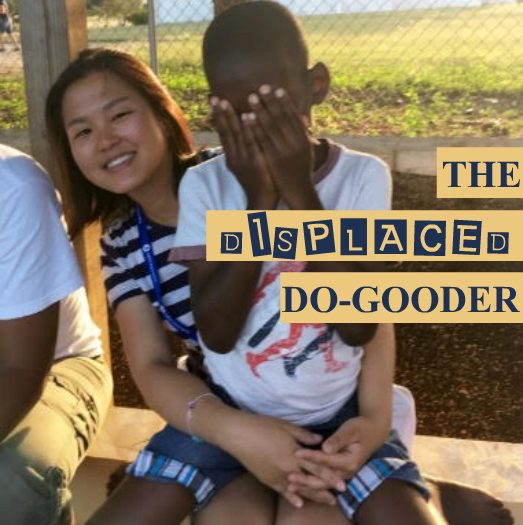
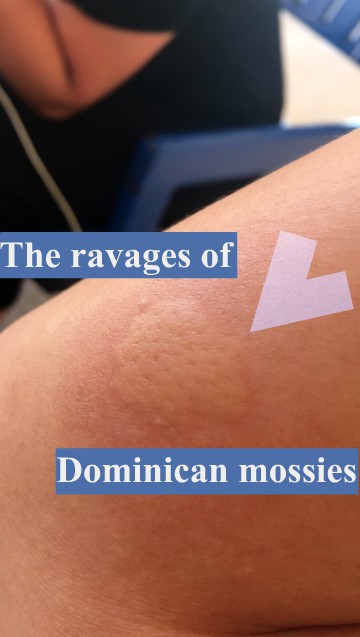
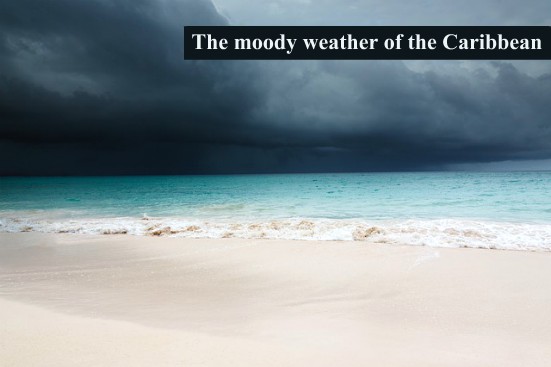
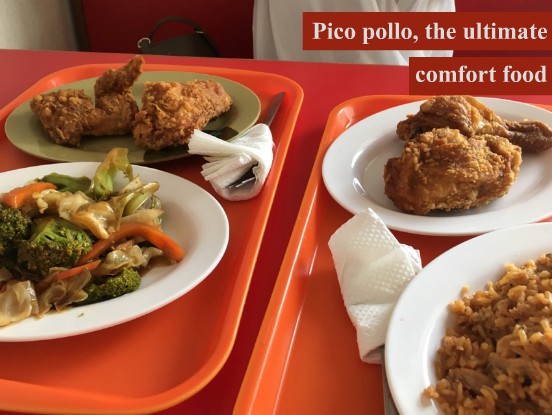











 The first is
The first is  The second book is Kalee Thompson’s
The second book is Kalee Thompson’s  One book I’ve already read and loved in 2016 takes place very far from Alaska. It’s Tim Sultan’s delightful
One book I’ve already read and loved in 2016 takes place very far from Alaska. It’s Tim Sultan’s delightful  Now, a book I’m looking forward to reading this year:
Now, a book I’m looking forward to reading this year:  Last year, while researching my third novel, I was lucky enough to come across Carl Hoffman’s
Last year, while researching my third novel, I was lucky enough to come across Carl Hoffman’s 
 Another mystery/thriller I just learned about is
Another mystery/thriller I just learned about is  Of the travel/expat books I read in 2015, three come to mind immediately. The first is
Of the travel/expat books I read in 2015, three come to mind immediately. The first is  Last year I also enjoyed reading the classic novel
Last year I also enjoyed reading the classic novel  Another book I enjoyed was
Another book I enjoyed was  This year, I’m looking forward to reading
This year, I’m looking forward to reading  Another volume on my bedside table is
Another volume on my bedside table is  Another book on my to-read list is Jennifer Hillman-Magnuson’s
Another book on my to-read list is Jennifer Hillman-Magnuson’s  The best book I read last year about displaced/expat/travel themes was
The best book I read last year about displaced/expat/travel themes was  Once again, these linked short stories are about reinvention, which is one of my favorite things about living abroad (and I like to think about the many versions of myself I’ve formed and perhaps left in Beijing, Melbourne and now London).
Once again, these linked short stories are about reinvention, which is one of my favorite things about living abroad (and I like to think about the many versions of myself I’ve formed and perhaps left in Beijing, Melbourne and now London). One of the best books I read last year was
One of the best books I read last year was  Another book I enjoyed reading last year was
Another book I enjoyed reading last year was  My last pick for top 2015 reads is
My last pick for top 2015 reads is  This year I’m looking forward to reading Gloria Steinem’s
This year I’m looking forward to reading Gloria Steinem’s  One of the best books I read last year was the memoir
One of the best books I read last year was the memoir  Another book I enjoyed was
Another book I enjoyed was  This year, I’m most looking forward to
This year, I’m most looking forward to 





